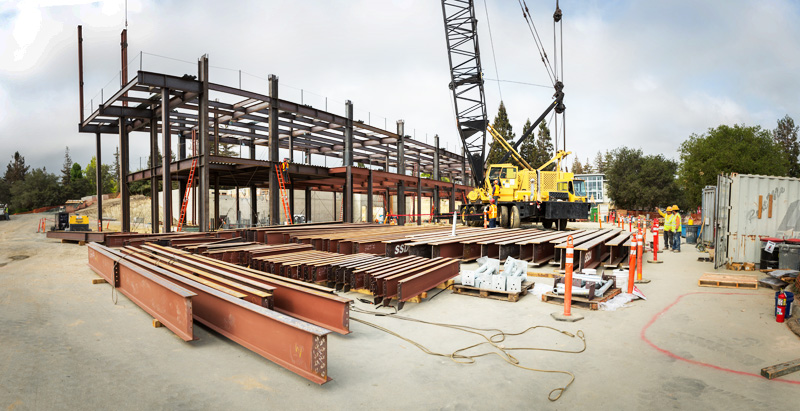Two organizations focused on leadership in the built environment are now working in unison to explore ways public-private partnerships (P3) can be used to achieve high-performance buildings. The National Institute of Building Sciences (NIBS) and the Royal Institution of Chartered Surveyors (RICS) are bringing together international experts on the utilization of P3 to address current government challenges and advance the achievement of a high-performance building stock.
Building owners and policy makers are becoming increasingly interested in the performance of buildings. Whether driven by sustainability, resilience concerns or the desire to protect the investments of taxpayer dollars, government agencies are under increasing pressure to achieve performance-based requirements. These pressures are coming at a time when budgets for new facilities, major capital improvements and long-term maintenance are contracting. Utilizing P3s may help governments overcome challenges related to project financing while driving achievement of performance requirements.
Despite their potential benefits, P3s have not been widely used for building projects in the United States. However, many governments, including Canada, Australia and members of the European Union, have found success in utilizing the approach for facilities such as schools, hospitals and prisons.
“Public-private partnerships can be a great tool for government agencies to improve energy efficiency, resilience and other high-performance building attributes, while reducing the cost of implementation,” said NIBS President Henry L. Green, Hon. AIA. "With the Institute's focus on achieving high-performance buildings and expertise in whole building design, and RICS's expertise in project finance and access to international best practices, we hope to lead the way towards greater use of P3s."
Despite their potential benefits, P3s have not been widely used for building projects in the United States. However, many governments, including Canada, Australia and members of the European Union, have found success in utilizing the approach for facilities such as schools, hospitals and prisons. And some P3 experts and organizations in the field think it’s about time to expand application of the concept to buildings in the U.S.
“The idea of applying the P3 concept more to buildings, and especially building performance, is a potentially promising new avenue in the U.S. for this powerful and creative partnership model,” said Americas Managing Director for RICS Neil Shah. “We are enthusiastic about collaborating on this initiative with NIBS, and combining our extensive resources to see how private industry can help public agencies to maximize energy efficiency and save taxpayer dollars. And we look forward to having more to say on this important subject at next year’s RICS Summit of the Americas.”
Shifting to a greater focus on building performance across the facility life-cycle is a more cost-effective and efficient way to achieve high-performance buildings. At the beginning of the P3 process, the government agency occupying the building identifies the required performance and terms of the project. With the performance requirements defined early, the private partner can then work across the design, construction and operations phases of the project to identify the most cost-effective strategy to assure such requirements are met.
International authority on housing, real estate and infrastructure Sandy Apgar, FRICS, CRE, FIoD, FRSA explained, “P3s enable public authorities and private firms to solve complex building problems that neither could accomplish by working alone. The larger and more complex the project, the more likely it is that a P3 vehicle can leverage government and business resources, and save time and cost over conventional single sector structures.”
Such an approach also encourages the use of emerging best practices (including integrative design processes), adequate training of operations personnel and the sharing of building information.
“Government laboratories have unique research equipment and skills that few businesses can match. And military housing P3s have pioneered award-winning, energy-efficient, environmentally responsible buildings and neighborhoods, through novel site layouts, ‘green’ construction materials, and numerous other technical and operational innovations,” Apgar continued. “On the other hand, businesses have organizational know-how, management systems, and pro-active cultures that are challenging for public agencies to adopt, and could help government agencies integrate and make the most of these private-sector innovations.”
NIBS and RICS are set to begin work on the P3 project this summer and are looking for input from industry experts. The two organizations plan to issue a report on the topic in April 2016 at the RICS Summit of the Americas in Washington, D.C.
Experts interested in participating in this effort can contact Ryan Colker at NIBS [rcolker@nibs.org] or Thomas Pienaar at RICS [tpienaar@rics.org] to learn how get involved.
Related Stories
Sponsored | BD+C University Course | Jan 17, 2024
Waterproofing deep foundations for new construction
This continuing education course, by Walter P Moore's Amos Chan, P.E., BECxP, CxA+BE, covers design considerations for below-grade waterproofing for new construction, the types of below-grade systems available, and specific concerns associated with waterproofing deep foundations.
Adaptive Reuse | Jan 12, 2024
Office-to-residential conversions put pressure on curbside management and parking
With many office and commercial buildings being converted to residential use, two important issues—curbside management and parking—are sometimes not given their due attention. Cities need to assess how vehicle storage, bike and bus lanes, and drop-off zones in front of buildings may need to change because of office-to-residential conversions.
MFPRO+ News | Jan 12, 2024
Detroit may tax land more than buildings to spur development of vacant sites
The City of Detroit is considering a revamp of how it taxes property to encourage development of more vacant lots. The land-value tax has rarely been tried in the U.S., but versions of it have been adopted in many other countries.
MFPRO+ News | Jan 12, 2024
As demand rises for EV chargers at multifamily housing properties, options and incentives multiply
As electric vehicle sales continue to increase, more renters are looking for apartments that offer charging options.
Student Housing | Jan 12, 2024
UC Berkeley uses shipping containers to block protestors of student housing project
The University of California at Berkeley took the drastic step of erecting a wall of shipping containers to keep protestors out of a site of a planned student housing complex. The $312 million project would provide badly needed housing at the site of People’s Park.
MFPRO+ News | Jan 8, 2024
Canada turns to 1940s strategy to speed up housing construction
To address a severe housing shortage, Prime Minister Justin Trudeau’s administration has begun a housing construction strategy pioneered in the years after World War 2. The government aims to use a catalog of pre-approved home designs to reduce the cost and time to construct homes.
Green | Jan 8, 2024
DOE releases RFI on developing national definition for a Zero Emissions Building
The Department of Energy released a Request for Information (RFI) for feedback from industry, academia, research laboratories, government agencies, and other stakeholders on a draft national definition for a Zero Emissions Building.
Codes and Standards | Jan 8, 2024
Australia to be first country to ban engineered stone countertops
In 2024, Australia will be the first country to ban engineered stone countertops. The ban came after a years-long campaign supported by doctors, trade unions, and workers over concerns that the material was causing increased silicosis cases among workers cutting and handling it.
Roofing | Jan 8, 2024
Researchers devise adaptive roof tile concept that adjusts to ambient temperatures
Scientists at the University of California Santa Barbara published a paper that proposes adaptive roof tile technology that can adjust to ambient temperatures. Using a wax motor, tiles could switch from a heating or cooling state enabling savings on heating and cooling costs.
Mass Timber | Jan 2, 2024
5 ways mass timber will reshape the design of life sciences facilities
Here are five reasons why it has become increasingly evident that mass timber is ready to shape the future of laboratory spaces.
















